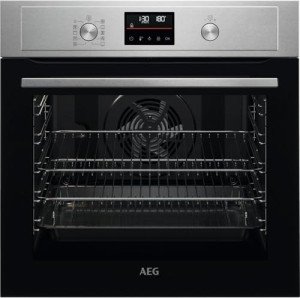3 Reasons You're Self Cleaning Oven Settings Is Broken (And How To Repair It)
Understanding Self-Cleaning Oven Mode: A Comprehensive Guide
In today's busy world, preserving a clean cooking area can frequently seem like a complicated job. Thankfully, modern technology has made it easier to keep home appliances clean. Among the most innovative features discovered in contemporary ovens is the self-cleaning mode, a game-changer for many homeowners. This article checks out the mechanics, benefits, and restrictions of self-cleaning ovens, offering readers with a comprehensive understanding of how to successfully use this feature.
What is Self-Cleaning Oven Mode?
Self-cleaning oven mode is an advanced function that enables your oven to clean itself without the need for extreme chemicals. The process involves utilizing heats— generally between 800 ° F to 1,000 ° F(427 ° C to 538 ° C)— to incinerate food residues, grease, and gunk, turning them into ash. This ash can then be cleaned away quickly with a moist fabric, leaving the oven tidy and ready for use.
Types of Self-Cleaning Ovens
There are primarily 3 kinds of self-cleaning ovens, each with distinct features and cleaning techniques:
Pyrolytic Cleaning:
- Description: This technique heats the oven to incredibly heats, incinerating remaining food particles.
- Benefits: Highly reliable; vaporizes hard-to-remove substances.
- Factors to consider: Some models may produce a smoky smell during the process.
Steam Cleaning:
- Description: This approach uses steam to loosen gunk, making it much easier to wipe away.
- Advantages: Environmentally friendly and generally less odorous.
- Factors to consider: Requires manual cleaning after the cycle is total to get rid of residue.
Self-Cleaning with Soaking:
- Description: This method involves soaking the oven surfaces in a special cleaning option.
- Benefits: Effective for regular maintenance.
- Considerations: More lengthy and may need acquiring specific cleaning products.
Benefits of Using Self-Cleaning Oven Mode
The self-cleaning oven mode uses different benefits that can streamline cooking area upkeep:
- Time-Saving: Reduces the amount of time invested scrubbing and cleaning by hand.
- Chemical-Free Cleaning: Eliminates the need for severe cleaning agents, promoting a more ecologically friendly kitchen area.
- Thorough Cleaning: Capable of reaching temperatures that combine deep cleaning with sanitation, guaranteeing that the oven is really tidy.
- Convenience: Often needs minimal preparation; merely activate the cleaning mode and let it do the work.
How to Use Self-Cleaning Oven Mode
Utilizing the self-cleaning feature on an oven is fairly uncomplicated. Follow these necessary actions:
Preparation:
- Remove all oven racks and any loose devices.
- Make sure the oven is empty to permit heat circulation.
Establishing:
- Select the self-cleaning alternative on your oven's control board.
- Pick the preferred cleaning period; most ovens allow you to clean up for 2 to 4 hours.
Beginning the Cycle:
- Ensure the door is locked (most modern ovens will lock automatically).
- Press start and leave the oven to complete the process.
Cooling off:
- Once the cycle is complete, permit the oven to cool down; this normally takes a couple of hours.
- Wipe away the ash with a damp cloth following the cooldown period.
Safety Precautions to Consider
While self-cleaning ovens are normally safe, following specific precautions can enhance the safety of the cleaning process:
- Ventilation: Ensure the cooking area is well-ventilated throughout the cleaning process to disperse any prospective smells or smoke.
- Stay Attentive: Do not leave your home while the cycle is running, specifically if it is the first time using the self-cleaning function.
- Child Safety: Keep kids and family pets far from the oven during operation to avoid accidents.
Limitations of Self-Cleaning Ovens
In spite of their numerous benefits, self-cleaning ovens do include some constraints:
- Heat Generation: The heats can affect the surrounding cabinets or trigger heat damage if not appropriately ventilated.
- Duration: Cleaning cycles can take numerous hours, which might not always suit a hectic schedule.
- Cost: Ovens with self-cleaning features can be pricier than standard models, making them a considerable investment.
- Use and Tear: Regularly using the self-cleaning function could lead to increased wear on specific elements with time.
FAQs About Self-Cleaning Oven Mode
Can I remain at home while the oven self-cleans?
- Yes, it's advisable to watch on the oven for safety reasons, especially during the heat-up stage.
Will self-cleaning damage my oven?
- Most modern ovens are constructed to sustain the self-cleaning process, but it's vital to follow the manufacturer's instructions.
How frequently should I use the self-cleaning function?
- This depends upon usage; many homeowners choose to self-clean every few months or as needed based upon how heavily they utilize the oven.
Do I require to utilize cleaning products with self-cleaning modes?
- No, self-cleaning ovens do not require chemical cleaners, as the process itself is designed to remove residues.
Can I use my oven while it's in self-cleaning mode?
- No, the oven door will lock during cleaning, and it can not be used up until the cycle is finished and the oven has cooled off.
The self-cleaning oven mode represents a significant development in kitchen technology, streamlining the cleaning process and minimizing the need for extreme chemical cleaners. Ovens And Hobs has laid out the benefits, types, usage treatments, and safety precautions associated with self-cleaning ovens. By comprehending how this feature works, homeowners can efficiently leverage modern home appliances to maintain a tidy and safe cooking environment while conserving effort and time in their busy lives.
